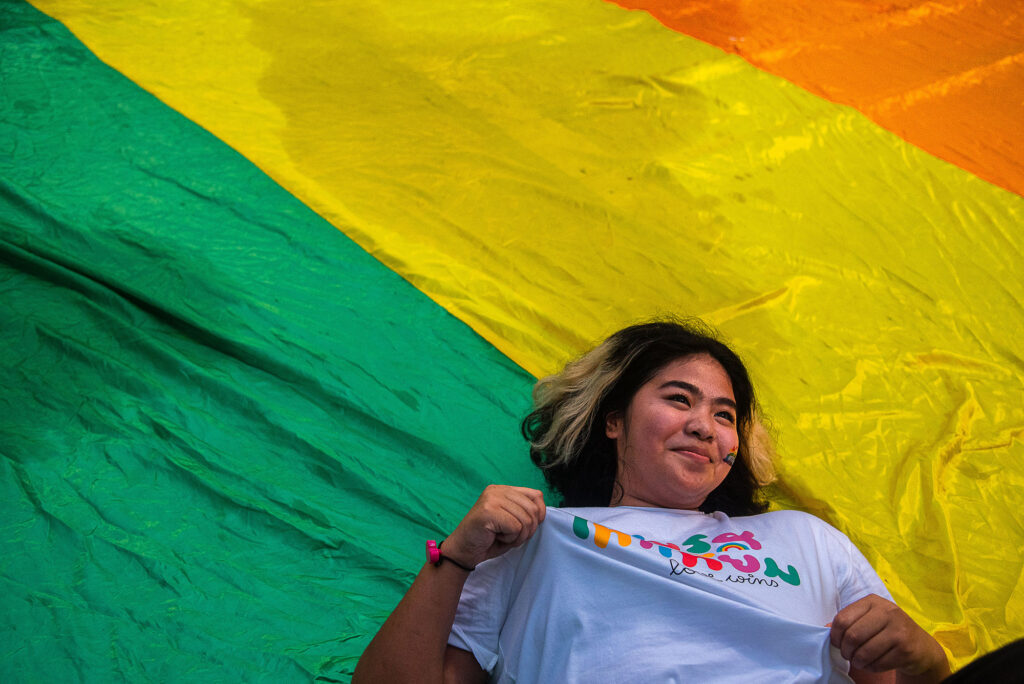The Photo Essay series: SDGs I The Depth of Field
In January 2025, Thailand crossed a major milestone towards achieving gender equality by implementing the Marriage Equality Act. While there have been perceptible positive changes over the years in the attitudes of society towards women and LGBTQI+ communities, they continue to face discrimination and marginalisation
Thailand, on the surface, appears to be making strides towards achieving gender equality and empowering women and girls, in line with the United Nations Sustainable Development Goal 5 (SDG 5). However, beneath this progress lies a more complex reality as women continue to face numerous challenges.
Meanwhile, LGBTQI+ individuals — notably absent from explicit mention in SDG 5 — continue to advocate for their inclusion in the broader gender equality framework, with marriage equality through the new Marriage Equality Law, officially known as the Amendment to the Civil and Commercial Code Act (No. 24) B.E. 2567 (2024), marking just one step in their ongoing struggle for rights and equality.
At the heart of SDG 5 are ambitious targets to address gender disparities. The goal seeks to eliminate discrimination, violence and harmful practices against women and girls, ensure equal participation in decision-making, value unpaid care work, and advance reproductive rights. It also promotes women’s economic rights, technology-driven empowerment and policies to advance gender equality.
Thailand has translated and addressed these targets into related laws and national plans, including the Gender Equality Act B.E. 2558 (2015), the 20-year National Strategy, and the Constitution B.E. 2560 (2017), according to the National Economics and Social Development Council.
As outlined in the country’s recent submission to the Convention on the Elimination of All Forms of Discrimination Against Women, the Ministry of Social Development and Human Security has even made these SDG 5 targets a priority. The Department of Women’s Affairs and Family Development leads this effort, collaborating with various networks to implement a roadmap focusing on five areas: raising gender awareness, linking SDGs with national plans, promoting women’s development through committees and officers, applying value chain analysis to drive progress, and fostering cross-sectoral partnerships.
Key progress includes introducing gender-responsive budgeting, adopting the National Women’s Development Strategy (2017–2021, 2023–2027), and enacting the Gender Equality Act to combat gender-based discrimination.
These efforts have contributed to gradual progress in gender equality since Thailand’s commitment to SDG in 2015. This is reflected in various reports and indices, with gender inequality steadily decreasing, as shown by the Gender Inequality Index, and a slight improvement in the country’s gender parity score in the 2023 Global Gender Gap Index.
Women’s representation in the country’s political sphere has risen to a record high; women members make up 19.6% of the House of Representatives and 22.5% of the Senate, according to the 2024 Inter-Parliamentary Union report. Additionally, Thai women’s participation in the labour force has surpassed the global average at 59.2%, compared to 75.6% for men, the World Bank noted in its report in 2023.
While these figures demonstrate positive trends and improvements, they remain relatively low, highlighting persistent gender inequality.
The gender disparity in pay also remains an issue. As stated in the 2020 UN Report on Women’s Economic Empowerment in the Indian Ocean Rim, women earn up to 10% less than men. Other obstacles, such as discrimination and limited access to leadership roles, compound the challenges women face.
The significant gap between women and men highlights deep-rooted structural barriers and patriarchal norms that limit access to equal opportunities. These norms perpetuate gender stereotypes and undervalue women’s contributions in both the public and private spheres. Official statistics often fail to account for women’s participation in the informal economy or the additional hours spent on unpaid care work.
These systemic challenges continue to hinder progress and restrict women’s full participation in society. Thailand’s efforts in achieving SDG 5, although well-intentioned, are yet to translate into substantial, lasting change in women’s lives. The limitations of SDG 5 often overlook cultural and societal factors, as well as the intersectionality of various issues that perpetuate gender inequality.
SDG 5 and LGBTQI+ individuals
Crucially, SDG 5 fails to explicitly include LGBTQI+ individuals in its vision of gender equality. This omission sidelines critical discussions on the rights and needs of LGBTQI+ communities, who face unique and compounding forms of discrimination. Without explicit recognition, their experiences remain invisible in policies, further marginalising them in the social, economic and political spheres.
Thailand has often been branded as a “haven” for LGBTQI+ individuals. Campaigns like the Tourism Authority of Thailand’s “Go Thai, Be Free”, portraying the country as an LGBTQI+ friendly destination, raise an important question: Whose haven is it, really? Is it truly a paradise for those within the community? While the country is often praised for its relatively favourable attitudes toward LGBTQI+ individuals, this reputation masks deeper issues. Stigma, discrimination, violence, and exclusion remain pervasive.
According to the UNDP, many LGBTQI+ individuals in Thailand face discrimination, with stigma forcing them to hide their identities, withdraw from social networks, and pretend to be someone they are not. Discrimination is further compounded by negative attitudes from healthcare workers and the absence of legal protections, leaving LGBTQI+ individuals vulnerable to exclusion.
Acceptance often feels conditional — tolerated rather than truly embraced — placing undue pressure on LGBTQI+ people to compensate for their identities. These societal realities underscore the slow progress on LGBTQI+ rights in Thailand. Moreover, the country’s Equality of Opportunity for Sexual and Gender Minorities score in 2024 by the World Bank reflects a moderate regulatory framework, with significant gaps in areas like access to education, the labour market, and protection from hate crimes.
This reveals that the so-called “haven” for LGBTQI+ individuals is a myth, with limited legal protections that are often inadequately enforced.
It’s only in recent years that some progress to address their rights and equality have been made, and growing acceptance can be observed, reflecting in shifting societal attitudes and greater visibility of LGBTQI+ voices in the media and public discourse.
The Gender Equality Act supports LGBTQI+ individuals through the Committee on Determination of Unfair Gender Discrimination, which investigates gender-based discrimination, including cases related to gender identity and expression.
A major milestone in the progress is the recent passage of the new Marriage Equality Act, which came into effect in January this year. It’s a hard-fought achievement that signals progress towards legal recognition and protection for LGBTQI+ individuals. However, the over 20-year fight for this right still underscores and reminds people of the challenges along the way.
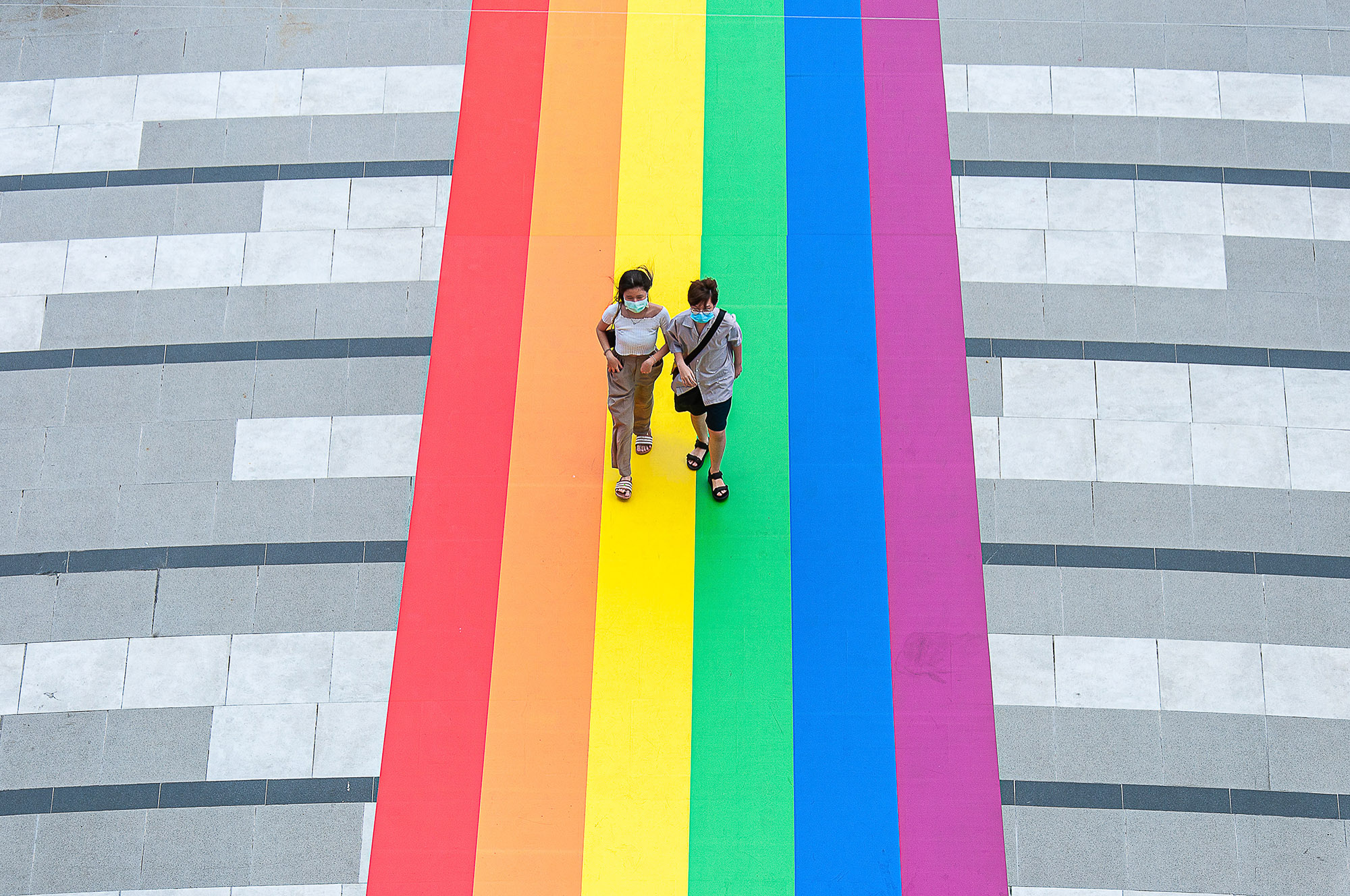
The rainbow flag is displayed in front of a well-known shopping mall in the Samyan area of Bangkok to celebrate Pride Month in June 2021.
Photo: ©Peerapon Boonyakiat
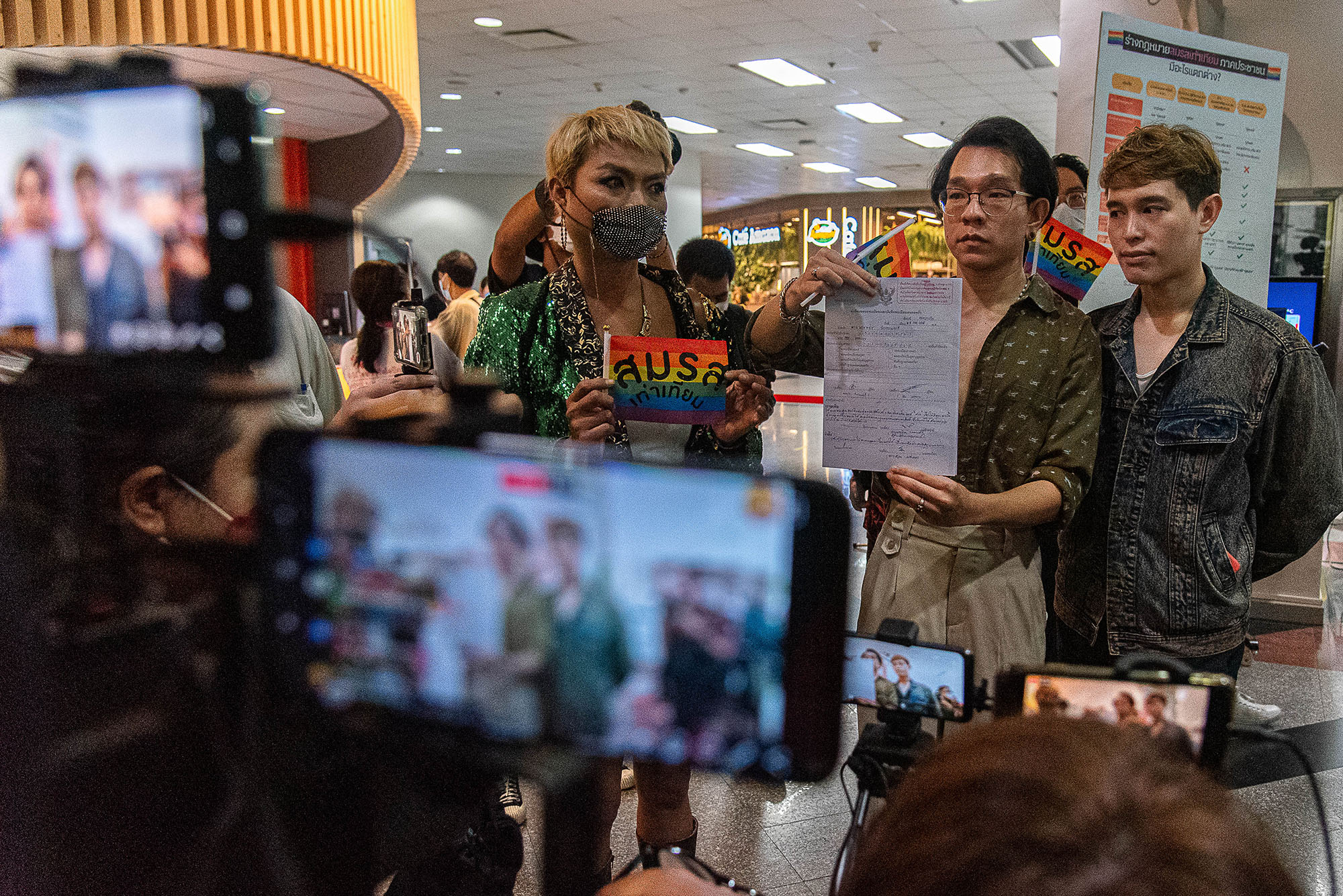
Photo: ©Peerapon Boonyakiat
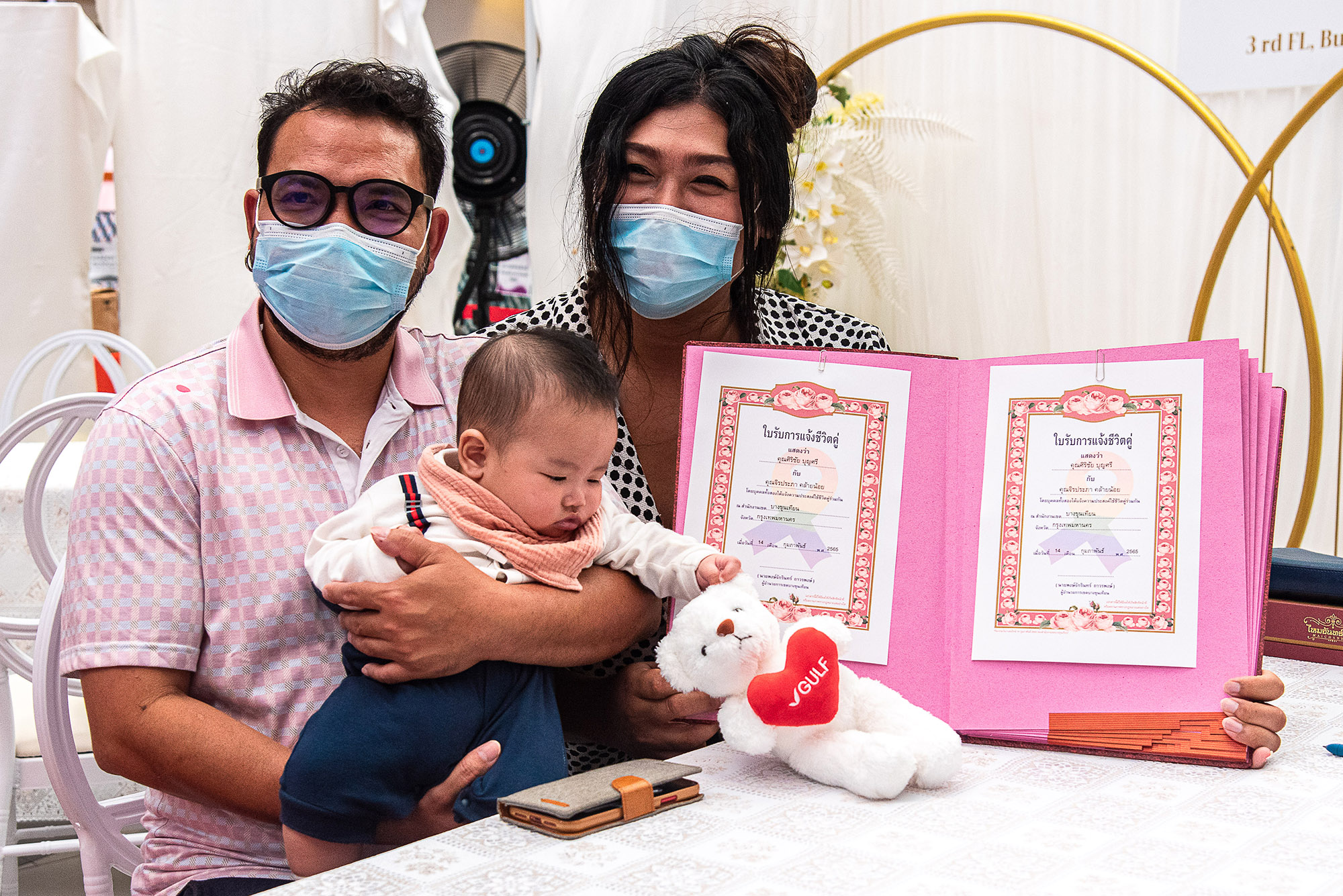
Photo: ©Peerapon Boonyakiat
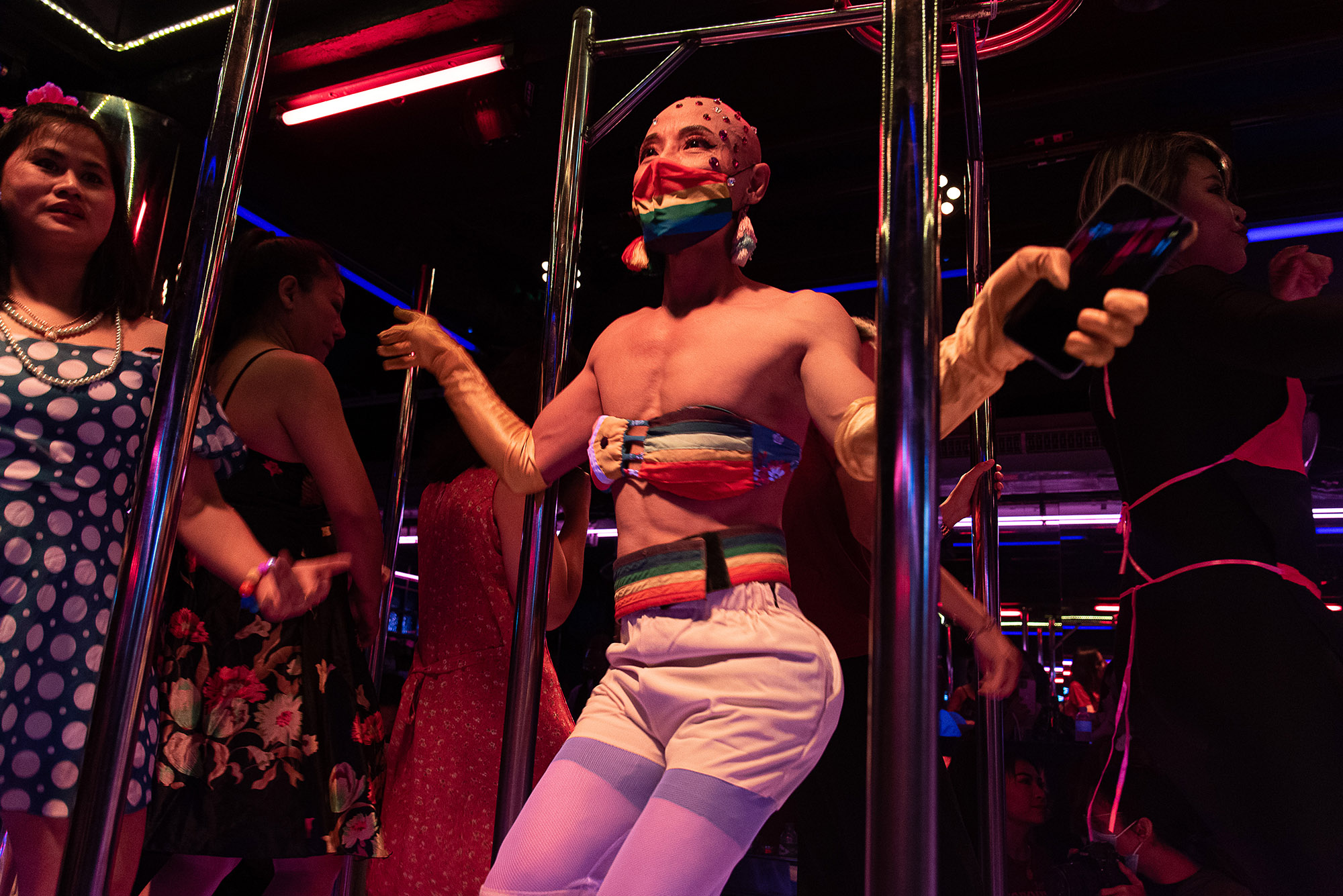
Sirisak Chaithed, also known as Ton, is a human rights activist advocating gender equality and marriage equality rights. He is also a prominent voice for those engaged in sex work. Sirisak collaborates with various organisations to arrange campaigns that promote the rights and freedoms of LGBTQI+ individuals, support marriage equality, and work towards improving the quality of life and rights of sex workers.
Photo: ©Peerapon Boonyakiat
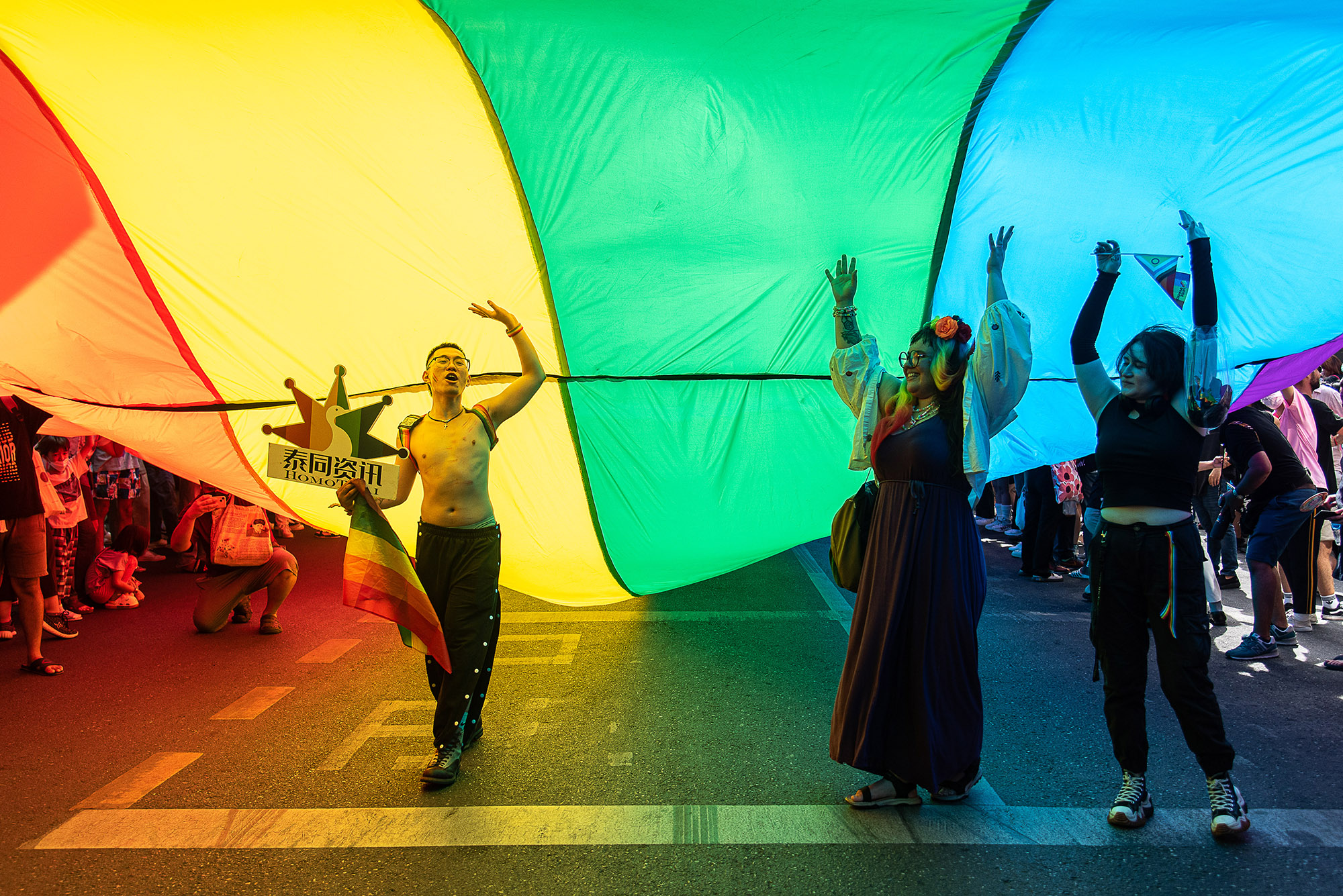
Photo: ©Peerapon Boonyakiat
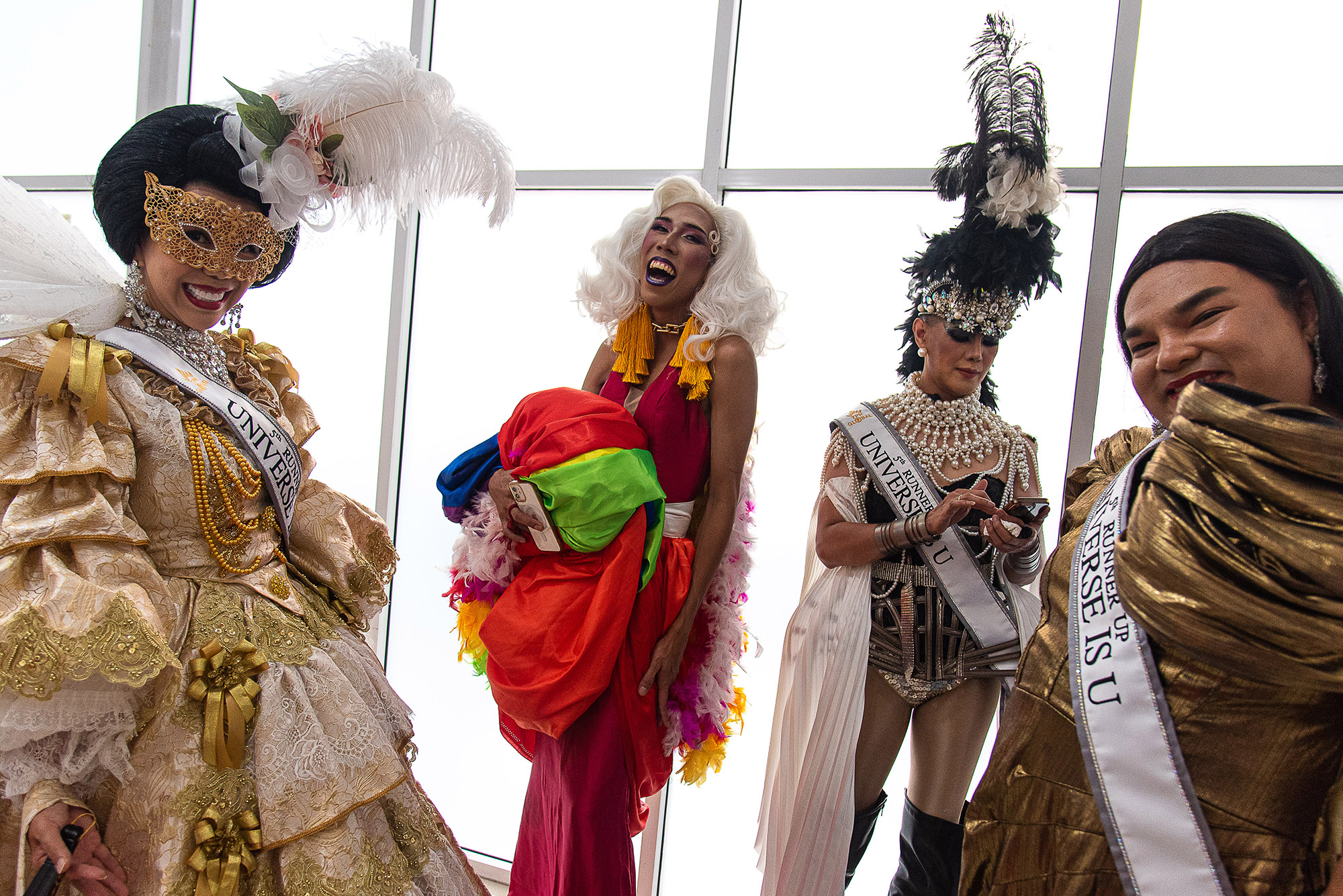
Pride Month participants dress up in their own prepared outfits before joining the march to celebrate gender equality on the occasion of Pride Month, held on Sukhumvit Road on June 1, 2024.
This march elevated the cause to a whole new level, with the participation of prominent figures from various sectors, including the public sector, political sector and various organisations, to help raise awareness about gender diversity in Thailand.
Photo: ©Peerapon Boonyakiat
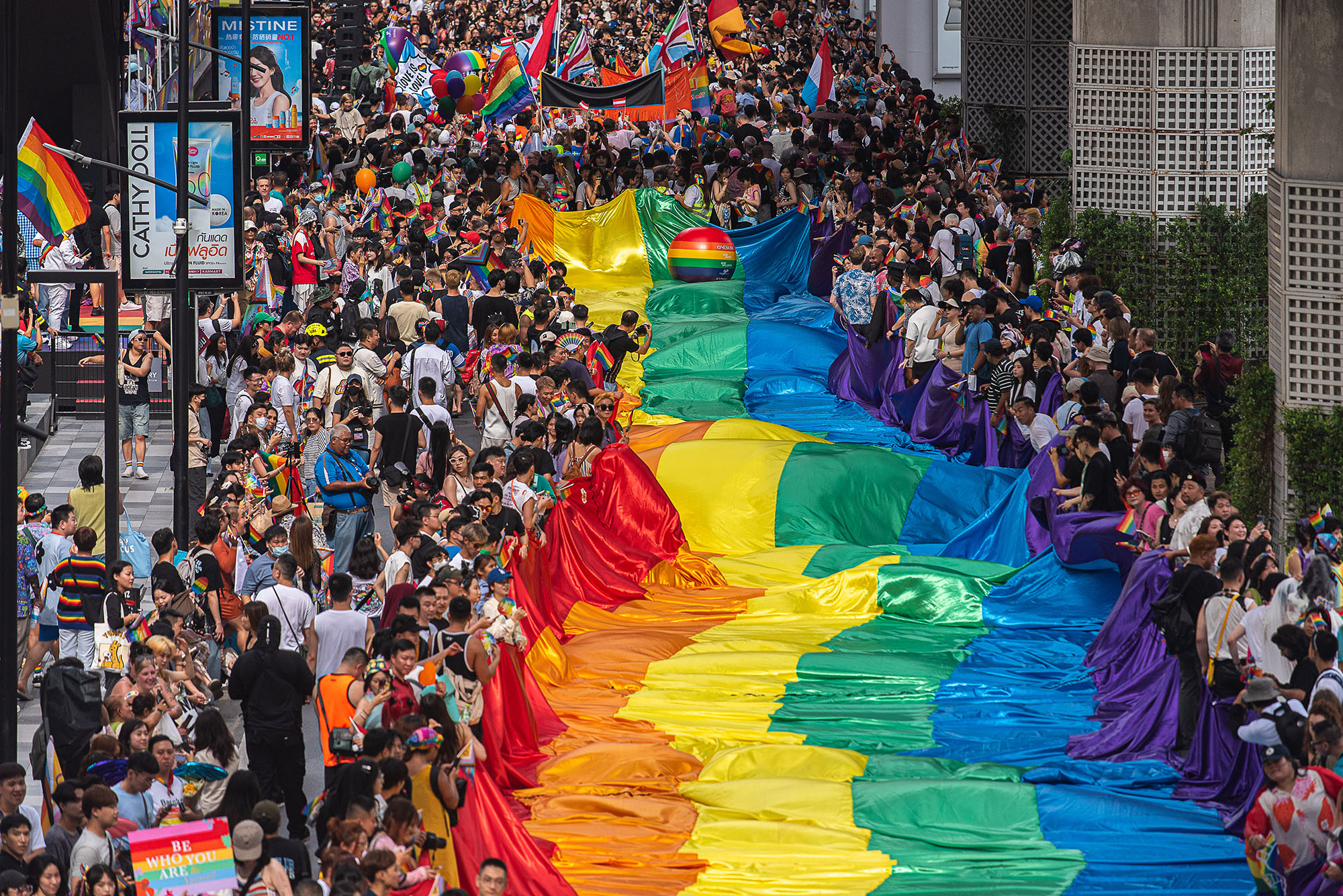
Photo: ©Peerapon Boonyakiat
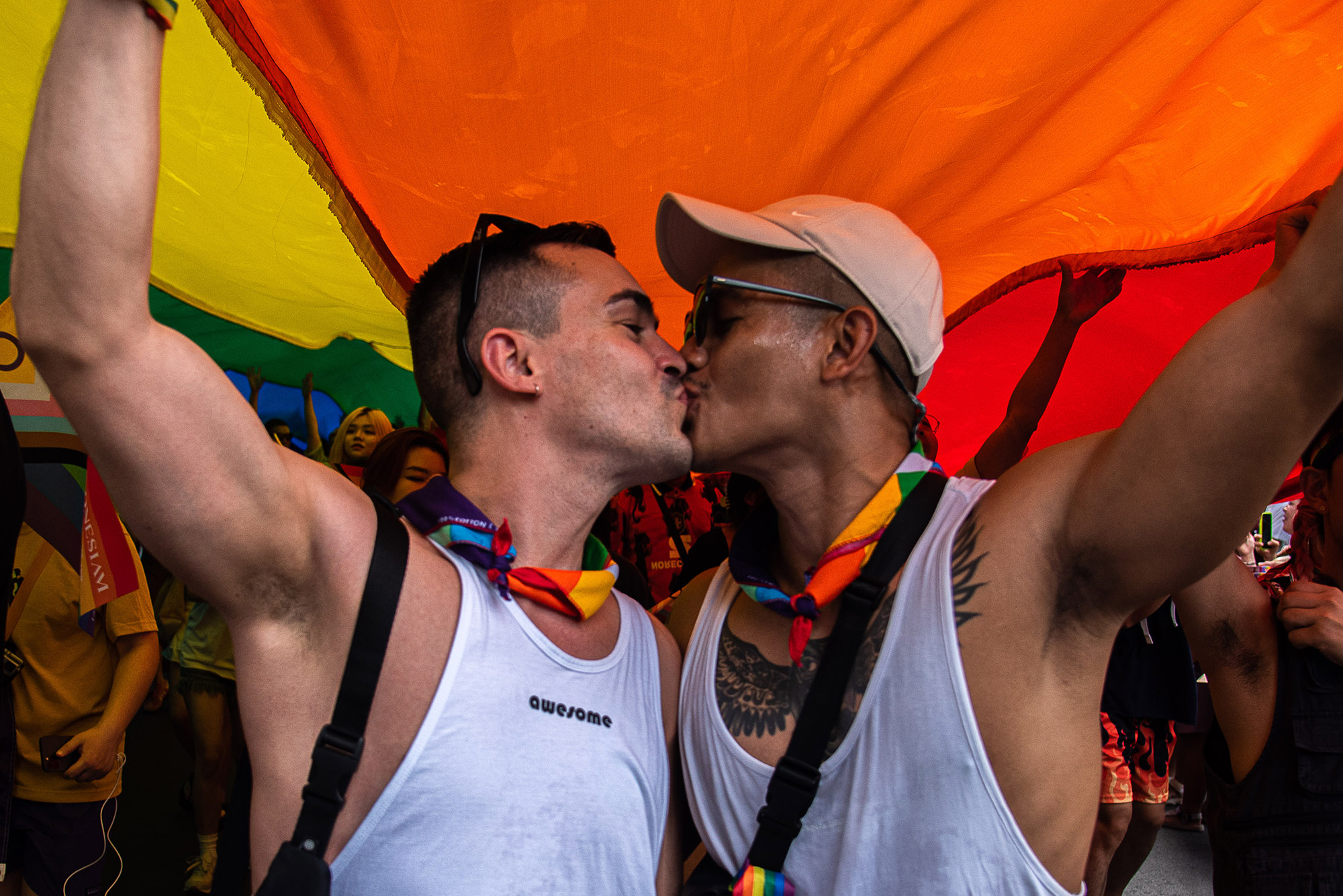
Photo: ©Peerapon Boonyakiat

The bill was later published in the Royal Gazette and took effect 120 days later — January 23, 2025.
Photo: ©Peerapon Boonyakiat
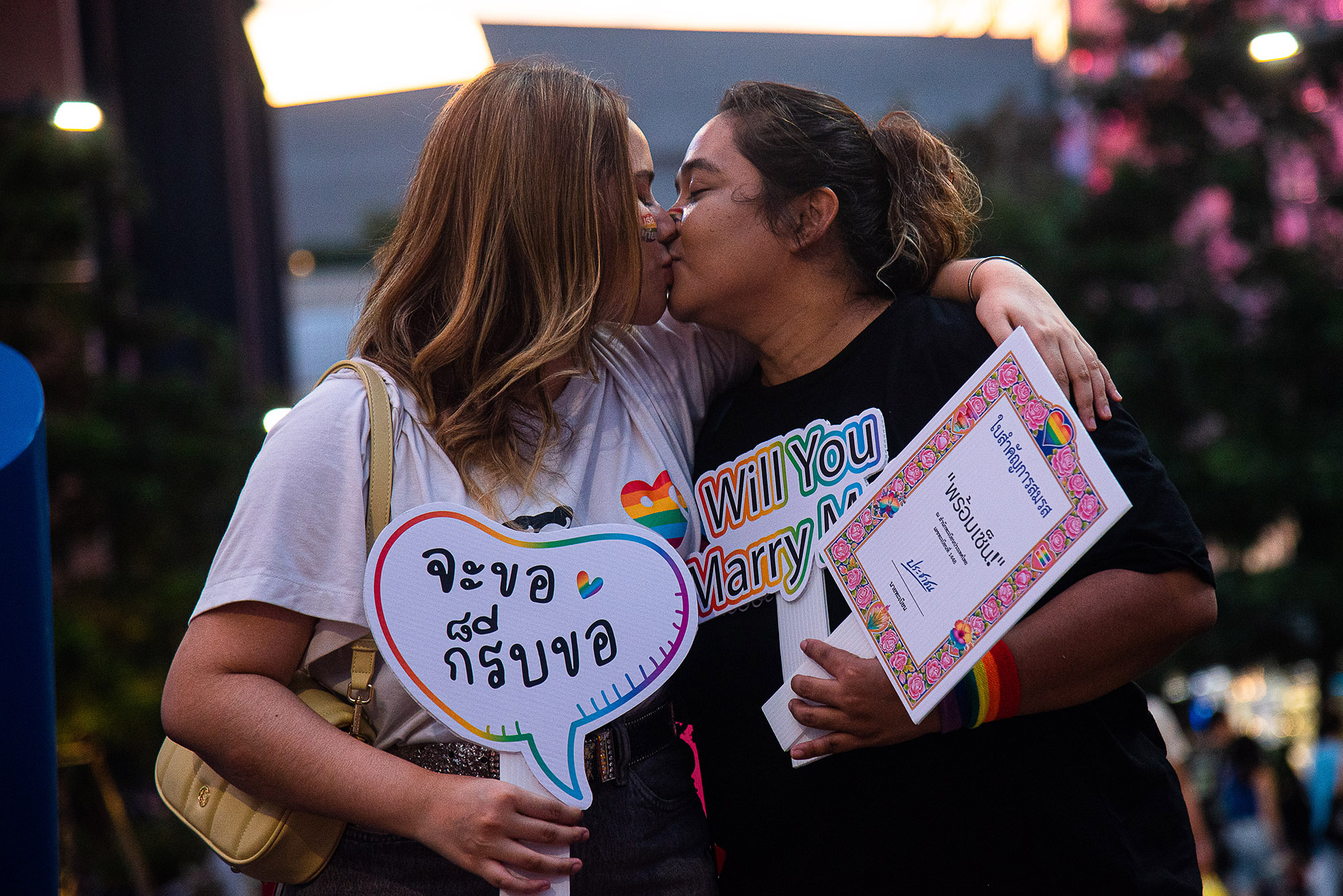
Photo: ©Peerapon Boonyakiat
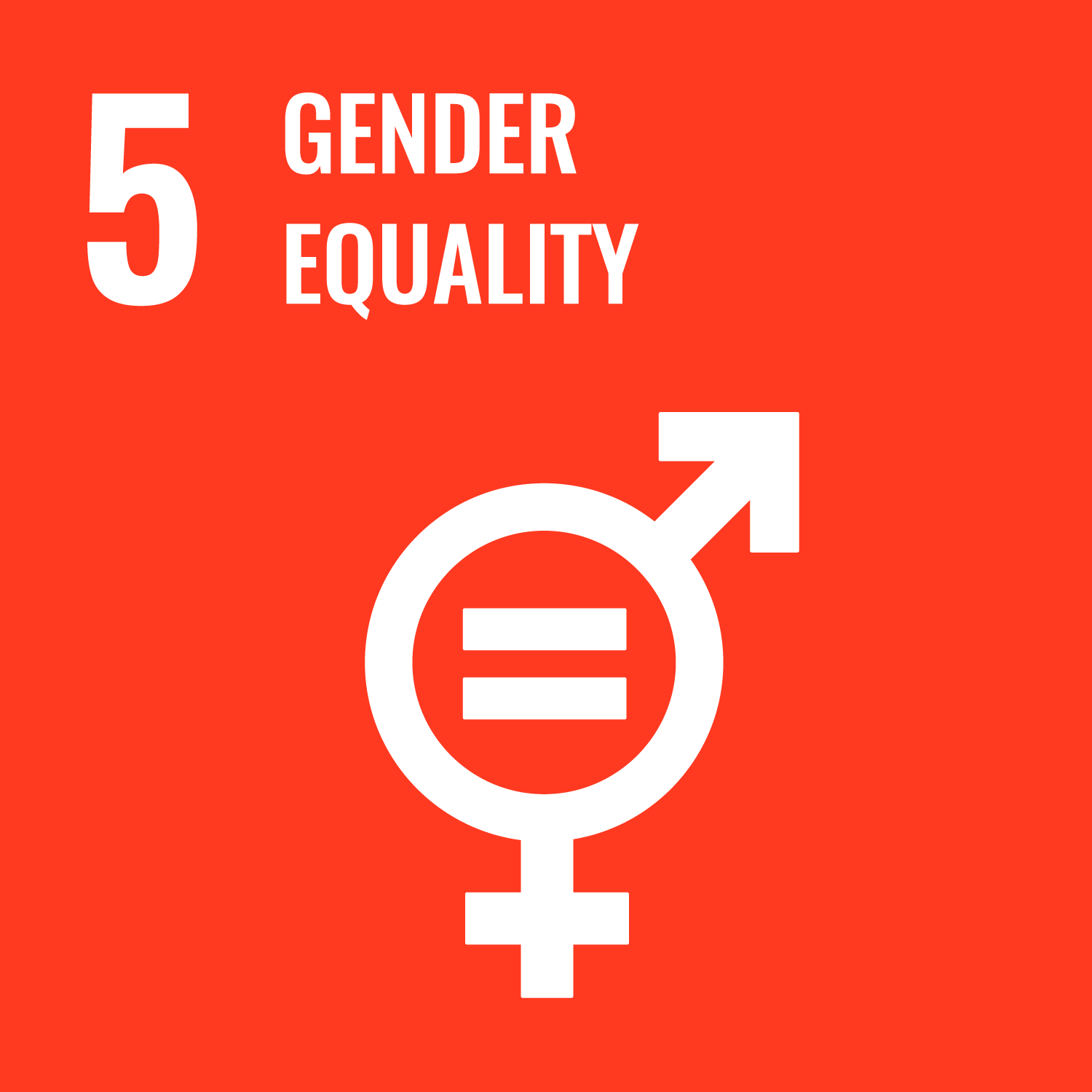
Achieve gender equality and empower all women and girls
Since being conceived in 1992 during the Earth Summit in Rio de Janeiro, Brazil, “sustainable development” has become a buzzword that has helped guide development around the world. The goals have followed a steady trajectory of increased emphasis — from the Millennium Development Goals (MDGs) in 2000 to the Sustainable Development Goals (SDGs) in 2015, strengthening the world’s new development paradigm. At the heart of the SDGs addressed by the UN’s 2030 Agenda for Sustainable Development are 17 key goals that call for action by all countries to end poverty and other deprivations. These must go hand-in-hand with strategies that improve health and education, reduce inequality, and spur economic growth — all while tackling climate change and working to preserve our oceans and forests, according to the UN. The only challenge is: how to translate all those goals into a strong commitment and action. To flesh out the ideas so that people can understand them easily and therefore take action, Bangkok Tribune has come up with a new project: “SDGs I The Depth of Field”, using its signature style of photojournalism — storytelling through photo essays — to interpret and translate the ideas and challenges behind the goals into powerful visual stories told through the lenses of noted photographers.

Queer feminist with a strong interest in gender, human rights, and development. Currently working on issues including, but not limited to, masculinities and tech-facilitated gender-based violence against children. Previously involved in advocacy on various issues across Southeast Asia.

